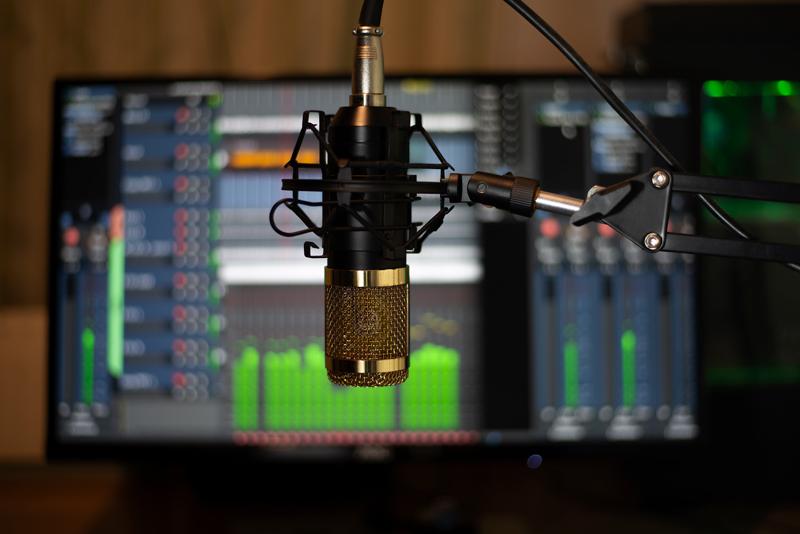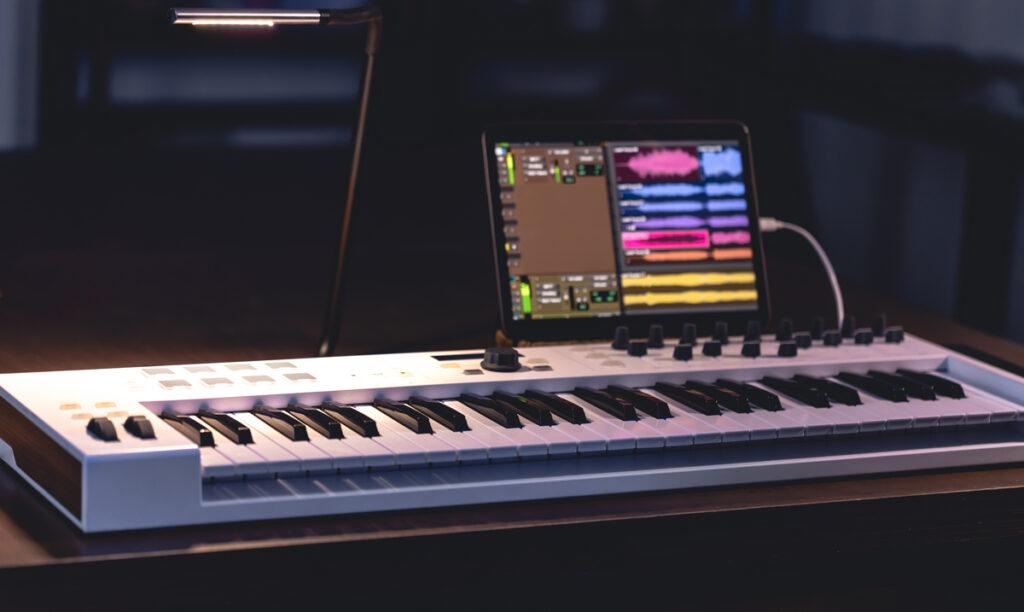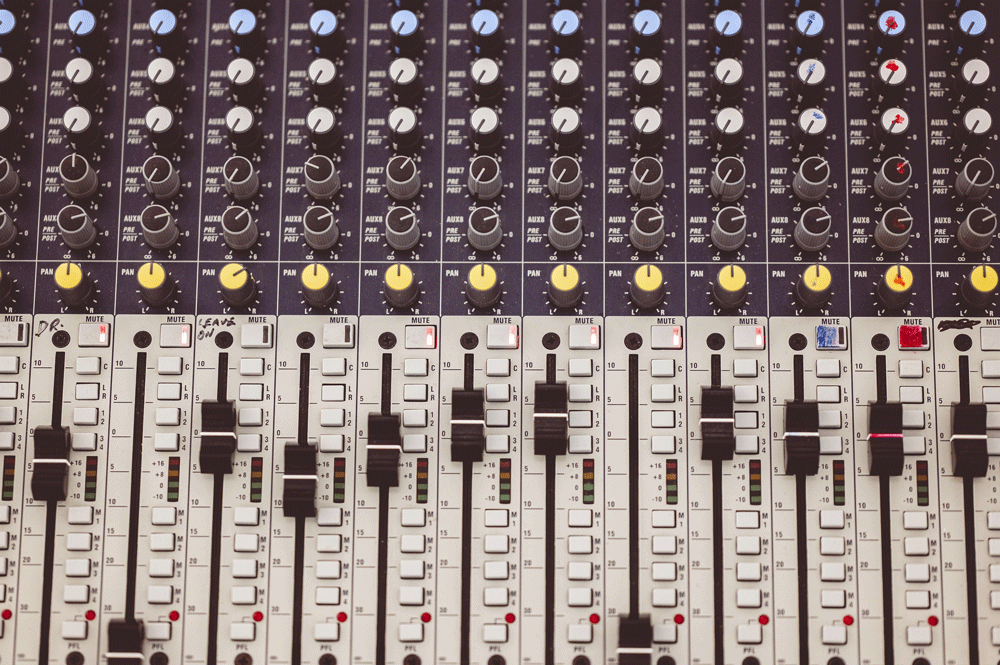Stems are one of the core elements in music production. Using stems in music is priceless, it can simplify and facilitate the working process of a producer or an audio engineer.
Working with stems can save money and time for mixing, and form a great way to back up a project for easy future alterations, remixes, extracting instrumental or acapella parts, etc.
As you see, if you work with a multitrack, you need to be able to correctly form stems and use them.
Despite the fact that stems are simply groups of tracks in a multitrack, you’ll need some experience and knowledge to operate with them without mistakes. You’ll need to correctly choose how and which tracks to unite into one stem.
In this article, we’ll give you some insight into why stems are needed, and some practical advice on how to create and use them in music professionally, so, keep reading.
What are stems in music production
Stems in music are audio files containing parts of a musical project. A group of stems for one project should be created in such a way that, when played simultaneously, they sound exactly the same as the project. Each stem audio file is created by combining tracks from the project’s multitrack. Often similar instrumental or vocal parts go into the same stem.
 For example, a song may consist of the following stems:
For example, a song may consist of the following stems:
- Drums,
- Bass,
- Guitars,
- Synths,
- Lead vocal,
- Backing vocals, etc.
Stems, besides the actual recorded and edited tracks, may contain tracks with effects like reverbs, parallel compression, and others.
All the stems played together, with an aligned starting point and without normalization, produce the complete song.
Stems can be uploaded back to a DAW for further editing or mastering, and even though they don’t give so many possibilities for editing as initial tracks, stems can turn out to be easier, more effective, more cost-efficient, and less time-consuming than working with a hundred tracks in a multitrack.
Let’s delve into the distinctions between stems and tracks, and explore scenarios in which working with stems in music production becomes absolutely essential.
The benefits of working with stems
 Almost every audio engineer, no matter professional or amateur, uses stems in their projects. That implies that there are more advantages to grouping tracks into stems than there are disadvantages. We see that stems in music are extremely useful.
Almost every audio engineer, no matter professional or amateur, uses stems in their projects. That implies that there are more advantages to grouping tracks into stems than there are disadvantages. We see that stems in music are extremely useful.
Let’s look at just some of the positive sides of working with stems
1. Stems make complicated projects much simpler
If you have a multitrack that consists of 10 or 20 tracks, then the project wouldn’t become much simpler if divided into stems.
But for a project with dozens of individual tracks or even close to a hundred tracks, reducing it to, let’s say, ten or fifteen stems will make a huge difference. It will be more convenient to operate with the project, and, of course, much easier to return to the song after some time and make a remix. In this case, the difference between stems and initial multitrack is huge.
2. Stems save your time
As we said earlier, stems make projects simpler, and it will take less time to work with a smaller project.
Especially if you need to return to a song after a week or more, then it would take time to recall everything you need to know about all the tracks in the multitrack before you start working.
However, with stems, it would be much easier and quicker to work with the project and apply the changes you wanted. In audio production sometimes you’ll need to extract acapella or instrumental parts from a song, you can easily do it with stems.
3. Stems make mixing easier and cheaper
 When you have a project containing a lot of tracks, then sending it to a mix engineer is a complicated task.
When you have a project containing a lot of tracks, then sending it to a mix engineer is a complicated task.
First of all, you have to make sure that for every track it is clear what instrument or effect it is. Because the mix engineer who is not familiar with your song will not want to spend a lot of time sorting out your tracks and figuring out your project.
On the other hand, the cost of mixing is usually higher for bigger projects.
So, if you use stems correctly, the project will become clearer, easier to use, and more convenient to send to a professional for mixing or checking. In this case, using stems will even save you money, because mixing prices often depend on the size of the project.
 4. Stems can be used for further remixes
4. Stems can be used for further remixes
Creating stems is a great way to back up your project in case you need to make changes in the future.
Sometimes you may want to create a remix, to bring the vocal up or down, to alter the drums or guitars. There often is a need to make the instrumental version of a song, or extract the vocal part.
Saving the project in stem files reduces the number of tracks and makes the project simpler, however, it usually gives enough freedom to make all the needed alterations and versions.
5. Stems can be used for stem mastering
Stem mastering is a powerful way to give a final perfecting touch to a song. Especially if you are not completely sure that the mix is done exactly as it should be.
Stems give mastering engineers the freedom to alter the mix by applying EQ, compressors, and other plugins and effects to individual stems, like vocal, backing vocal, drums, etc.
Stem mastering is a great opportunity to have a professional check and correct the mix.
However, if the audio engineer sees that there’s something wrong inside the stems, if there are big flaws in the mix, there might be a need to return to the mixing stage, and work with individual tracks again. Stem mastering will not be able to correct all kinds of mistakes.
The main idea about stem mastering is that it gives mastering engineers more freedom to improve the song. So if you trust your mastering engineer and his knowledge, it’ll always be beneficial for you to send him stems for mastering. It’ll give your song a greater sound and bring it to an even higher level to sound like top chart songs.
Disadvantages: difference between stems and tracks
 Working with stems in music, of course, has its low points, because, in a way, it gives you fewer options for editing.
Working with stems in music, of course, has its low points, because, in a way, it gives you fewer options for editing.
In the case of a multitrack not divided into stems, you have all the recorded and created tracks to operate with. You can apply plugins and effects to each track separately as you wish. It gives huge freedom for editing, and you can not avoid this step, especially at the first stages of editing and mixing a song. And later on, it always gives more options to alter the mix if you have access to individual tracks.
When you use stems, you can not change the balance of elements inside stems easily, and will not be able to divide these audio files back into the initial tracks.
However, when stems are created professionally, stems are enough to apply the needed changes to the music.
Stems and multitracks: how to create stems
As simple as they seem, stems take some experience to create. As you see, they are not created automatically in a DAW. You have to decide which instruments go into which stem and when the stems are ready and the mix is done.
Moreover, once a stem is printed (created as one audio file), you will not be able to divide this file back into tracks and edit them separately. So, the balance between individual tracks in one stem must be perfect and all the needed plugins must be applied before the stem is created.
Tracks are usually joined into stems by groups of instruments. For example, drums can form a separate stem, guitars, lead vocals, backing vocals, synths, and others.
Sometimes there can be two or three stems for a certain group of instruments, like for drums, for example, you can create a stem for kicks, a stem for hats, and so on, depending on the complexity of the project.
You have to export stems from your DAW only when you are sure that they are ready. Because all the elements inside every stem must be well mixed.
The elements inside a stem must be:
- Well balanced related to each other
- Free from defects in the tracks
- Made perfect with all the needed plugins and EQ
When you bounce the stems, you have to make sure that:
- All the stems start at zero time point
- Stems are being saved in a lossless audio format
- The quality of the audio is no less than that of the initial tracks
Stems form a great way to keep your project. When done correctly, they are a perfect means to back up a song and save the opportunity for remixing.
Want a free test mix of your track?
We get it.
That’s why we’ll do a full hybrid (analog + digital) mix of your song —
for free.
No upfront payment. No risk.
You only pay if you’re blown away. And if you are, we’ll slash 40% off the final price.
Nobody else in mixing and mastering offers this.
Why?
Because most studios say yes to every project. We don’t. We only mix what we’re excited about — so send us your best track. If we like it, we’ll mix it like it’s going to the Grammys.
👉 Just drop your name and email to get started.
What is stems benefit for ordering mixing?
 Today many artists try to mix their songs themselves. Or at least, they make the first edits to the session, and create the first mix before they send the song to a professional mix engineer. In this case, it is very convenient for them to export stems.
Today many artists try to mix their songs themselves. Or at least, they make the first edits to the session, and create the first mix before they send the song to a professional mix engineer. In this case, it is very convenient for them to export stems.
First, stems preserve the balance and edits that the artist has made. The sound engineer will receive the project with the artist’s vision and processing. Sometimes the artists would use automatization and other complicated processing and all this will be safely sealed within the stems.
Secondly, the mixing price will be lower, because with stems the number of tracks becomes smaller. We know that the price of mixing the project often depends on the project’s size. The bigger the multitrack, the higher the price.
So, you see, sending stems for mixing becomes a tendency now and it has its benefits.
However, when you don’t know if you should make stems, or are not sure if you can create them correctly, it’s better to send the raw multitrack to the professional. In this case, making stems can harm the project.
If you send the multitrack for mixing, the professional audio engineer will mix your song and then create the final mix and stems for you, so you can easily make remixes in the future should you need them.
Sending stems to Major Mixing for mixing and mastering
 Major Mixing is a successful online mixing and mastering studio. Our professional audio engineers each have at least ten years of experience mixing and mastering big commercial projects. We know the music industry well, its newest trends and quality standards.
Major Mixing is a successful online mixing and mastering studio. Our professional audio engineers each have at least ten years of experience mixing and mastering big commercial projects. We know the music industry well, its newest trends and quality standards.
Our customers often send us stems for mixing. This is a modern, easy and convenient way to mix a song project.
However, we also mix multitracks. Sometimes, we receive really large projects from our customers, that include up to a hundred tracks. Each way has its benefits, as we discussed earlier.
Our advice for mixing is: only create stems and send stems when you really know what you are doing and when you are hundred percent sure you are not harming your project.
As for mastering, we often receive orders for stem mastering. With stem mastering, we can apply mastering plugins to the stems, and make the needed edits. This way it’s easier for us to make our clients’ songs even better.
Having worked in the industry for many years, we know how to mix and master songs so that the music will match modern standards. We bring sound up to the level of the top-chart hits so that our customers’ songs could successfully compete in the music world now.
Today, thousands of new songs are uploaded to streaming platforms every hour. To compete with this crazy amount of compositions available, your music must be of the highest standards and made at the industry level.
So, aim only at the best quality and trust only professional audio engineers with your songs to achieve success.
If you have any questions, or if you need help with mixing or mastering, please, feel free to send us a message. We’ll be happy to answer you and help you grow your career!









